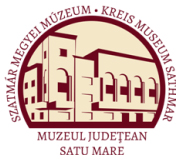Szőcs Péter Levente (szerk.): Călătorii istorice pe Valea Someşului. Ghid turistic (Satu Mare, 2014)
Pomi
Pomi On the left bank of the Someş River, at the easternmost edge of the county, the traveler reaches Pomi and the adjacent settlements of Aciua, Bicău and Borleşti. Pomi village was mentioned for the first time in 1407. It was owned by the Pauline hermits during the 14th century, but later it was taken over by the Drágfis. During the early-modern and modern period several small nobles shared the village, the most important ones, during the 19lh century, were the Tholdys. Their mansion, built in the 18th century was later reconstructed by the Ujfalussy family. The mansion is surrounded by an impressive park of almost six hectares. The Orthodox church Assumption of the Holy Virgin was built in 1854. Gavril Lazăr de Purcăreţi was born in Pomi in 1839. He was a member of the Memorandum movement, and an active promotor of the Romanian national movement in Satu Mare, as parish-priest of Sanislău and Archdean of the Eriu district. Borleşti was mentioned in written sources in 1584 for the first time. It was part of the Beltiug domain during the Middle Ages and, from the 18th century, became a property of the Károlyi family. They settled 43 Schwab families in 1785. After the Second World War most of Borleşti’s German speaking population was taken to labor camps in the USSR and the remaining part emigrated during communist regime. The Roman Catholic church Archangel St Michael was built between 1811 and 1813. Due to technical errors it had to be rebuilt in neo-gothic style soon afterwards. After the emigration of the German speaking community, there were no congregation, therefore it is currently used by Greek Catholics. The Orthodox church St Basil Aciua • Balotafalu Biserica ortodoxă • Ortodox templom • The Orthodox Church 79
